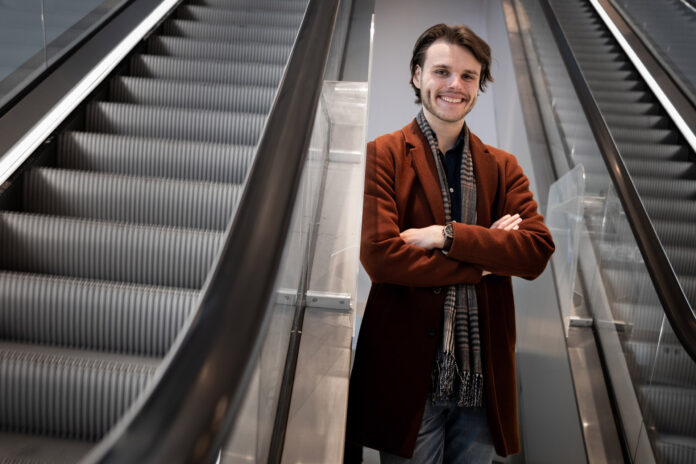He started as a student just barely scraping by, but recently, Joas de Jong completed his philosophy master’s degree summa cum laude with a 10 out of 10 on his thesis, having previously graduated cum laude in history. How did he manage that, and what is his thesis about?
Congratulations on the ten on your thesis, Joas! Did you expect to graduate this way?
‘No, certainly not. In the first years of my bachelor in history, I mostly got passing grades, so it was quite a leap to move from sixes to eights in my master, occasionally a nine, and now achieving a perfect score. Getting an eight now kind of feels like getting a six.
‘I must say, I had been working on my history master thesis for a year before this. That one was thirty thousand words plus ten thousand words of footnotes, and I got a nine for that, so that was an excellent grade. Then I had to write the philosophy thesis, which was based on some of the arguments I had already used in my history thesis. So, in essence, I had been working on it already.’
What is your philosophy thesis about?
‘The answer to the question ‘how do we connect with each other?’ is not as straightforward as it might seem. Philosophers like Spinoza, Locke, and Hume assumed that our brains work individually, that we independently come up with ideas, but our ideas arise from interaction with each other. I introduced an Italian philosopher who wasn’t as well-known in the Western canon: Giambattista Vico.’
‘Essentially, what Vico implied in his work are three different layers of contact. I made those layers explicit and turned them into a model. What you end up with are three different intersubjective issues. The first one is: how do people in the present connect with each other? How can we be sure that someone else understands the words as I intend them? That involves association. The second is: how do we grasp the unknown natural reality? And the third is: how do we understand historical figures? People who are historically very distant from us.’
That still sounds quite abstract…
‘Vico’s tradition revolves heavily around the unity of thought and action. Specifically, how do we imagine our reality and act in the reality we have collectively constructed? How do we, together, create the new from the old? And how do we create the new together, assuming it’s not entirely new since it has a historical origin? What I explicitly developed are the three layers you essentially need to effectively communicate together and come up with new actions together.’
In a way, you’re a sort of change philosopher?
‘Yes, in practice, I’m involved in innovation. I’m currently working on a PhD proposal to expand Vico’s model of intersubjectivity into a theory of intersubjective innovation. How do we collectively achieve sustainable change? And by “together” I mean: in conversation with each other, with the natural reality, and with the past.’
That’s a very practical approach for a philosopher. What do you hope to achieve?
‘Yes, it is. I’ve always wanted that very practical approach in philosophy, and it frustrated me not seeing that in the works of others. I’d like to see my theories tested in practice. I also utilise this research for practical purposes; currently, I work as a learning historian. This involves showing organisations in transition where they’ve lost sight of each other and why, for instance, the change they aimed for hasn’t succeeded even after five years.’




